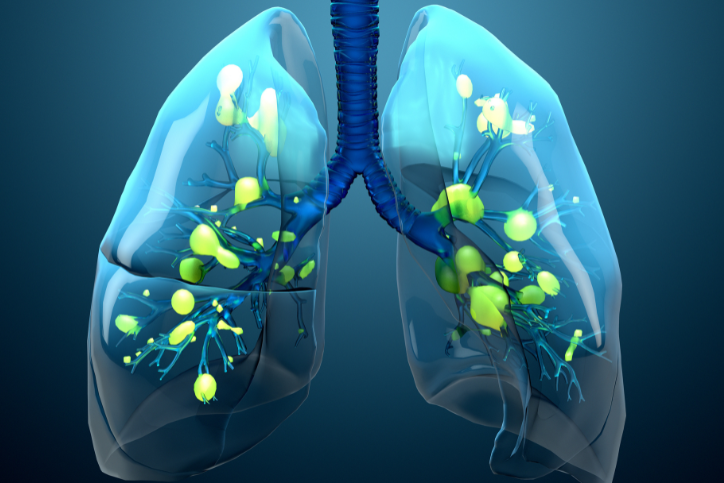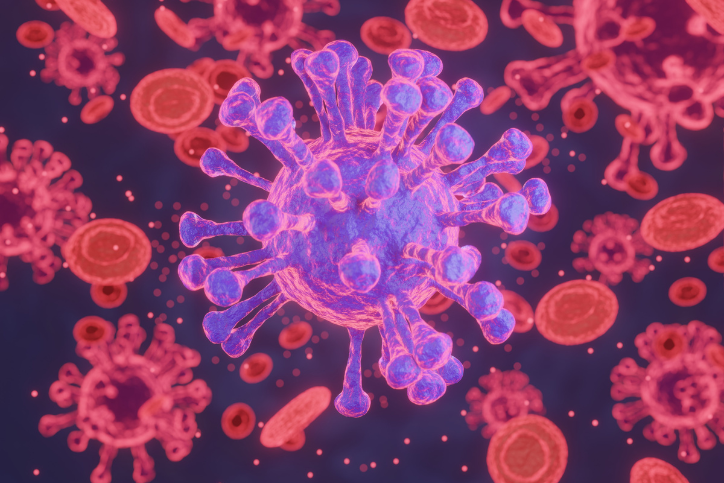
Experts predicted this to be the worst flu season we’ve seen in years, and it seems they were right.
According to the CDC, early increases in seasonal flu activity continue, with the southeast and south-central areas of the country reporting the highest levels of activity.
But we also keep hearing about the respiratory syncytial virus (RSV)…and what about COVID-19?
If you or your child are coughing, sneezing, or have a runny nose…what is it?
The flu, COVID-19, and RSV are all highly contagious respiratory infections.

A respiratory tract infection is an infection of the lungs, airways, sinuses, or throat. While respiratory infections occur year-round, there’s a significant increase in these infections during the fall and winter months (cold and flu season).
During cold and flu season, it helps to know the common symptoms and how to avoid spreading illness to those around you. With the increasing cases of COVID-19, understanding the difference between common respiratory infections and your treatment options is even more important.
Keep reading to learn how to protect your family this respiratory virus season.
What is the difference between the flu, COVID-19, and RSV?
The flu, COVID-19, and RSV are all highly contagious respiratory infections caused by different viruses. It’s possible for a person to be infected with multiple viruses at the same time.
What causes the flu?
The flu is caused by the influenza virus and spreads easily during the winter months when people spend time together indoors. It leads to high fevers, coughing, body aches, and other respiratory symptoms. The virus can change from year to year, which is why you should get a flu vaccine every year.
What causes COVID-19?

COVID-19 is caused by severe acute respiratory syndrome coronavirus 2 (SARS-CoV-2) and is more serious because of the higher mortality rate. It’s characterized by fevers, cough, runny nose, body aches, and loss of taste and smell. For the most part, children seem to fare much better than adults if they get the coronavirus, but families should still be extra cautious.
What causes RSV?
RSV is caused by the respiratory syncytial virus, a highly contagious virus that can infect children and adults. In most people, the virus will present like a cold—a cough, runny nose, and sometimes a fever—but in some, it can be dangerous.
In infants, RSV can cause pneumonia or bronchiolitis, and people over the age of 50 or those with heart or lung disease are also at risk for complications.
What’s the difference in symptoms of the flu, COVID-19, and RSV?
It’s important to get testing for accurate diagnoses.
But there are some subtle differences between RSV, flu, and COVID-19.
- A unique symptom of RSV is wheezing. A wheeze sounds like a whistle or a rattle when your child breathes.
- A distinctive sign of the flu is a high fever. Along with other respiratory symptoms, the flu often causes high fevers of 103 or 104 degrees Fahrenheit. People usually feel a sudden onset of symptoms and feel miserable, more so than with other viruses.
- The signs of COVID-19 are similar to flu and RSV. But unlike other viruses, COVID-19 can have a serious effect on body systems outside the lungs. The flu can do this too, but the symptoms usually go away once the virus leaves your lungs. Several symptoms you may think are unique to COVID-19 are actually common among respiratory viruses:
- Loss of taste and smell: Many viruses, including those that cause the common cold and flu, can affect your sense of taste and smell.
- Vomiting and diarrhea: Up to 30% of children with respiratory viruses have gastrointestinal symptoms.
- Viral rash (most common in children).
- Mild allergy or cold-like symptoms especially in those who have been vaccinated or have had covid previously.
If you or your child are sick, the best thing you can do is come in for testing.
You can either schedule an appointment online or just bring them in for a walk-in visit.
How to prevent respiratory illnesses

In addition to wearing a mask and physical distancing, these steps can reduce your risk of respiratory infections:
- Make sure you and your child are vaccinated against the flu and COVID-19.
- Sanitize high-contact surfaces, such as desks, tables, and doorknobs if someone in your household is sick.
- Wash your hands regularly or use hand sanitizer.
- If you do become ill, stay home and wear a mask if you must be in public.
Additionally, it’s helpful to keep your child home if they’re sick. This minimizes the risk of spreading illness to other children at school.
Schedule an appointment now to get everyone’s vaccinations up to date.
